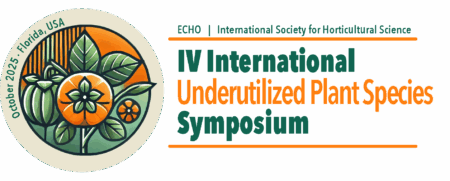Time to register!
Brainfood: Balanced diets, Diverse diets, Diverse flavonoids, Micronutrients and GHGE, African traditional diets, Tef diversity, Intercropping, Sleeping crops, Cluster bean, Taste
- A framework for adequate nourishment: balancing nutrient density and food processing levels within the context of culturally and regionally appropriate diets. Some processing, but not too much. Some animal-source food, but not too much.
- Diversity of Plant-Based Food Consumption: A Systematic Scoping Review on Measurement Tools and Associated Health Outcomes. And make the non-animal-source food diverse.
- High diversity of dietary flavonoid intake is associated with a lower risk of all-cause mortality and major chronic diseases. Make the flavonoids diverse too, while you’re at it.
- Greenhouse gas emissions in relation to micronutrient intake and implications of energy intake: a comparative analysis of different modeling approaches. It’s unclear whether diets that deliver more (and more diverse?) micronutrient are worse for greenhouse gas emissions.
- Africa’s contribution to global sustainable and healthy diets: a scoping review. African traditional diets are pretty healthy. I’m betting their greenhouse gas emissions are low and all.
- Population genomics uncovers loci for trait improvement in the indigenous African cereal tef (Eragrostis tef). Which is not to say that traditional African crops could not be improved, healthwise.
- Hidden potential of cluster bean: an unexploited legume crop for food and nutritional security. Or other underused traditional crops, for that matter.
- Impacts of biodiversity-positive intercropping systems on food quality, safety and the consumer acceptance: A case study of intercropped wheat. What, the food needs to be intercropped too? Another tick for African diets.
- The sleeping crops of eastern North America: a new synthesis. Traditional eastern North American crops, production systems and diets probably tick a bunch of boxes too. Awake, Cinderellas!
- But does it taste good? A plea to consider the importance of flavor in managing plant genetic resources. None of the above matters, I suspect, if the stuff doesn’t taste good. I’m looking at you, teff and cluster bean.
Brainfood: Complementarity, Temporality, Communality, Fonio trifecta, Atriplex domestication, Egyptian clover in India, Genebank information systems
- A significantly enhanced role for plant genetic resource centres in linking in situ and ex situ conservation to aid user germplasm access. On-farm conservation must result in use of the conserved diversity, and genebanks can help with that. Just another way of saying the two approaches are complementary?
- Looking back to look ahead: the temporal dimension of conservation seed bank collections. Those genebanks may need to do repeated sampling of the same population though.
- Landrace diversity and heritage of the indigenous millet crop fonio (Digitaria exilis): Socio-cultural and climatic drivers of change in the Fouta Djallon region of Guinea. Repeated sampling would defintely have helped.
- Community seedbanks in Europe: their role between ex situ and on-farm conservation. Repeated sampling is kind of what community seedbanks do, no?
- Impacts of climate change on fonio millet: seed germination and suitability modelling of an important indigenous West African crop. Community seedbanks may not be enough though.
- Phylogenetics, evolution and biogeography of four Digitaria food crop lineages across West Africa, India, and Europe. Maybe the wild relatives will help.
- Black Ash – a Forgotten Domestication Trait in Garden Orach (Atriplex hortensis L.). It’s amazing what people domesticated plants for in the past. And might in the future.
- Quality seed production scenario of Egyptian clover (Trifolium alexandrinum) in India: A 24-year retrospective analysis. But in the end, you have to get high quality certified seeds out, and that’s not always easy.
- The potential of seedbank digital information in plant conservation. Will definitely need a pretty good documentation system to keep all the above straight.
Nibbles: Nourishing investments, Genebank RoI, Seed science double, Ecuador genebank, Ethiopian genebank, MSSRF genebank, CG genebanks, Botanic gardens, SwissAid saves seeds, Brazil conservation, Indian diner, Kenyan food, Saladino on citrus, Lost apple, Seed Savers, Hybrids, Germplasm crime
- All of IFAD’s 5 investments that will help nourish the world need crop diversity. Prove me wrong.
- And yet we still have to have articles on communicating the importance of genebanks.
- Cosmos tries to do it by pointing to the science.
- Smithsonian Magazine tries to do it by saying it’s tricky.
- Genebanks try to do it by having nice new websites and talking to the media. Some of the biggest media.
- CGIAR tries to do it by calling them an Accelerator.
- IIED tries to do it by saying even botanic gardens can help farmers.
- SwissAid thinks “[n]ational and international gene banks should give farmers’ organizations low-threshold access to their collections.” No argument there.
- Maybe we should have songs about genebanks, like the Maxakali have about the Atlantic Forest.
- Or we could just talk about food, food, glorious food.
- Could also just fall back on the good old canonical lost-heirloom-apple-found story.
- Or the canonical medical case for “ancient grains” story.
- Though even there the heirlooms vs hybrids debate will rage I suppose…
- But, whatever we do, let’s not take it to extremes, shall we?
Coffee with everything
It might be because we happen to be doing something on the coffee diversity conservation strategy at work, but I have been noticing a lot of joe-related material online lately. There’s the bit on Sprudge (apparently, “the world’s most popular coffee publication”) about how coffee diversity needs a Svalbard. Seconded. And, from the same source, also comes a spotlight on Madagascar’s amazing coffee diversity.
Moving to West Africa’s diversity, there’s a Financial Times piece on Coffea stenophylla. And something that seems to be only on LinkedIn (for now) from Dr Steffen Schwarz of Coffee Consulate about how microbe diversity can do wonders with the flavour profile and caffeine content of C. liberica.
Finally, an official submission has gone in for Yemeni coffee to be included in UNESCO’s Intangible Cultural Heritage List. I wonder if all this bodes well for our thing.
